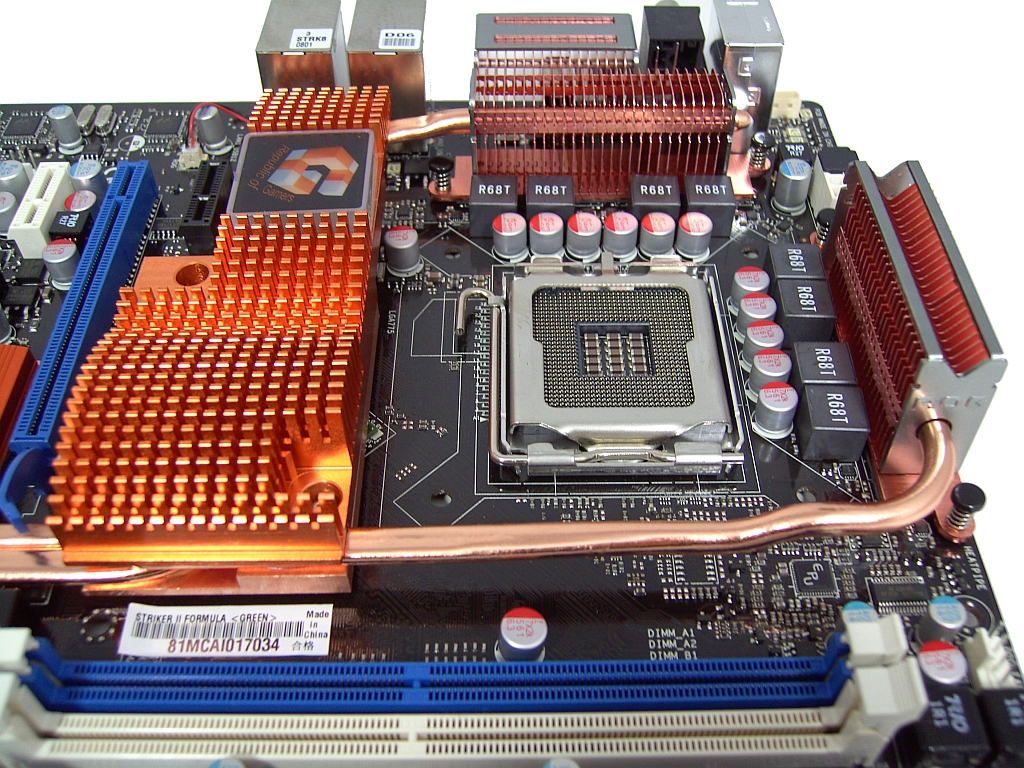

It's rare these days to find anyone using a PS/2 mouse, so ASUS replaced that port with two, more useful, USB ports. Rather than place two PS/2 ports on the back, there's only one, used for the keyboard. Although their placement is rather standard, we particularly liked the positioning of the 12V Power connection, as it keeps that pesky cable from interfering with other components and works well with cables routed underneath.ĪSUS does something different with the I/O backplane in order to accomodate not only the cooling mechanism, but to embrace progress as well.

The power connectors, floppy drive connector, and USB and front panel pins are also placed along the edge although in the standard orientation. The SATA ports wind up stacked like a pile of bricks which saves some room on the board and makes cabling a bit neater, if not more annoying when trying to remove the lower placed cable. With the GeForce 8800 GTX and 8800 Ultra cards utilizing dual-slot coolers, installing three such cards would completely cover all other slots.Īlleviating some concern about installing larger cards, the IDE and 6 SATA II ports are all on a right-angle along the front edge of the board, directly facing the drives themselves. Running a 3-way SLI setup, however, limits any further expansion hopes. The blue X16 slots are PCI-Express 2.0 compliant and a longer floppy SLI cable can connect the two cards even though there is a distance between them. The slot layout that we described earlier works fine for most scenarios, such as a single card or dual GPUs in SLI. Even the DDR2 gets a 2-phase power treatment, ensuring longer lifespan and better overclockability due to cooler temperatures and better efficiency.

Along with the addition of the ASUS Energy Processing Unit or EPU, the increased number of FETs should provide a more stable and efficient working environment by providing more power when under load and improving efficiency when idle. The FETs and polymer capacitors are smaller than those used on other boards, but should have an improved lifespan and enhanced thermal capacity. The CPU Socket area seems a bit congested, what with all the fin-type radiators and power regulation. The overall layout is similar to that of previous ROG boards such as the Maximus Extreme or Blitz series, except addtional heatpiping exists alongside the DIMM sockets and there aren't any mounts for water-cooling apparatuses. An additional x1 slot colored black is notched in the cutout of the main heatsink, and is used with the SupremeFX II audio card. Although the chipset cooling solution may look formidable from a top-down perspective, in reality it has a very low profile and shouldn't cause any issues when installing third-party CPU coolers.Ĭonsistent with NVIDIA's reference design for the 780i, the slot configuration of the Striker II consists of three PCI Express x16 slots, two in blue and a white one sandwiched in between, two standard PCI slots, and a single PCI Express x1 slot. Also, no garish neon colors are used for the main connections blue and white are the order of the day both for the DIMM and expansion slots. A bevy of copper heatsinks and tubing rise from the dark board used as the backdrop. At first glance, the ASUS Striker II Formula is, well, striking.


 0 kommentar(er)
0 kommentar(er)
